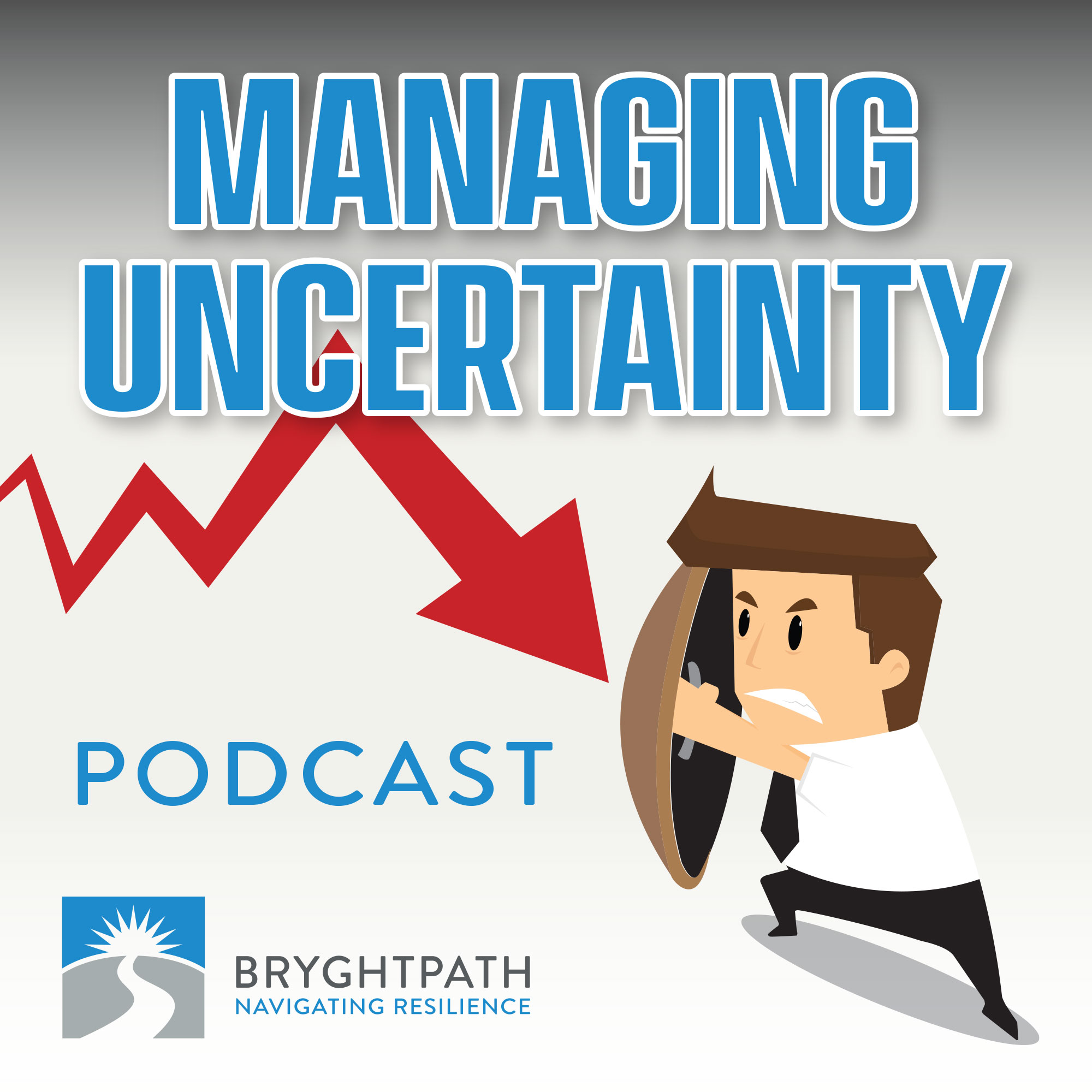Episode Transcript
Speaker 0 00:00:00 Hello, and welcome to the Managing Uncertainty Podcast. This is Brian St. Strauser, principal and chief executive here at Bright Path. And in episode 184, I want to talk just briefly about storytelling and your resilience program. And I wanna do this by using two scenes from a TV show. Uh, many of you will be familiar with the Emmy-winning television show, madman that ran for, um, I think seven seasons, uh, on amc. Madman considered one of the greatest television shows of the Modern era, uh, created by Matthew Weiner, uh, and, and centered on the story of an advertising firm and the men and women that worked there. Um, at the beginning of season four, in the season premiere episode one, the, there's been a, a major shift in the agency. They, uh, had an agency called Sterling Cooper. They sold that agency to a British, larger British advertising firm.
Speaker 0 00:01:02 And at the end of season three, they engineered an exit from that firm, uh, and started their own firm, a new firm, Sterling Cooper Draper Price with four partners. The story, of course, in madman revolves around the protagonist, which is Don Draper, the creative director of the agency. Um, the entire show really revolves around Don, um, and the people that are in his orbit. Um, all that is prelude. Episode four is about New Beginnings. Episode four is about storytelling, or I'm sorry, season, season four. Episode one is about new beginnings and storytelling. At the beginning of the episode, the advertising firm is won a major award, and Don Draper is in a bar, and he is providing an interview to a reporter. The reporter asks the question, who is Don Draper? And Draper just looks at him and says, what do men say when you ask them that?
Speaker 0 00:01:58 And the journalist says, well, you know, they, they usually take a moment and then say something cute. And, uh, Don just kind of says, well, that's not, I'm not gonna do that. And the journalist says, well, uh, anything, uh, you know, knock out wife, uh, house in the suburbs. And, you know, kind tells him a little bit about what he's learned about him by interviewing other people. And Don just looks at him and says, um, where did you hear that? Or Who told you that? And the reporter says, do you have anything? Now's your chance. And Don says, well, you know, I'm from the Midwest, and we were taught as not polite to talk about yourself. And that's really kind of the end of the interview. And it results in, in a not great article about Don Draper and about the firm. It just doesn't reflect well on the firm. And his partners are like, you miss this opportunity. You need to, you know, I'm gonna connect you with someone at the Wall Street Journal, and you're gonna have to do this interview again. The episode goes on and, you know, goes on to the
Speaker 1 00:02:58 Other, uh, kind of subplots for the episode. But the end of the episode has Don realizing that there is a direction he, that he wants to go, and he does have a story to tell. And so the episode ends with him interviewing with the Wall Street Journal reporter and the re the j the reporter asked the question, every firm has a voice, has kind of a catalyst or a leader at Sterling Cooper Draper Price is that Donald Draper. And Draper looks at him and says, yes it is. And proceeds to firmly and strongly tell the story about not wanting to be swallowed up by a bigger firm and walking into the owner's representative and saying, fire us. And that that was the launch of Sterling Cooper Draper Price. It's a complete flip of the narrative, and it's his willingness to tell this story in a strong way.
Speaker 1 00:04:00 We will link the clip of these two scenes in the show notes so that you can take a look at this and, and, and see it for yourself. But now you're probably wondering, Brian, what does any of this have to do with business continuity or crisis management, or crisis communications or resiliency? It has a lot to do with it. It has a lot to do with it because a lot of us aren't willing to go tell that strong story. We're not willing to put ourself out there in this way. We're more like the first interview. We're timid, we're quiet. We won't push our point of view. We're too afraid of upsetting in the Apple cartt. But to truly drive resilience, to truly have credibility in the C-Suite and with your board of directors, your program has to both be aligned with the organization's strategies and initiatives of where they're going and how you fit into that. And you have to be the kind of bold, courageous leader that is willing to tell that kind of story, that interesting narrative about resilience in your organization. That's it for this edition of The Managing Uncertainty Podcast. We'll be back next week with another new episode. Be well.


